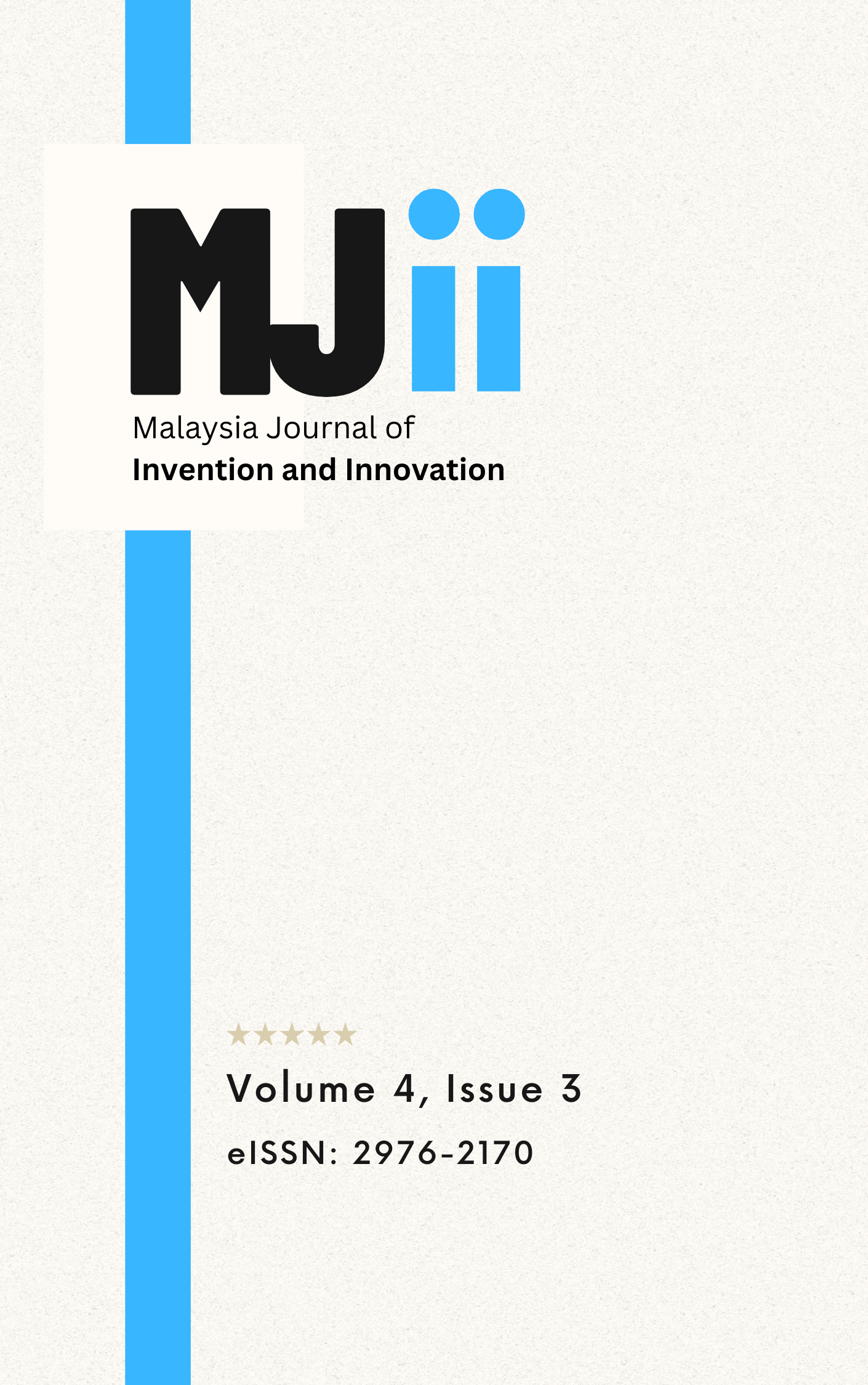The Development of Interactive Antenna Module for Wireless Communication Practical Assessment
DOI:
https://doi.org/10.64382/mjii.v4i3.113Abstract
This research focuses on the development of an interactive antenna module to enhance hands-on learning in wireless communication, specifically within the DEP50063 Wireless Communication course at Politeknik Sultan Salahuddin Abdul Aziz Shah. Traditional teaching methods and outdated laboratory equipment have limited student’s ability to fully understand antenna systems and wireless communication concepts. This problem has motivated the creation of an innovative antenna module that incorporates both omni-directional and directional antennas, modems and signal analysis tools to improve practical assessments. The objective of this innovation is to provide students with a comprehensive understanding of antenna characteristics, such as signal strength, coverage, and environmental factors, through interactive, real-world learning experiences. The developed module allows students to engage in experiments using modern equipment, facilitating the exploration of antenna performance in varying conditions and distances from the Base Transceiver Station (BTS). The results of these experiments showed that the directional antenna provided better performance in terms of higher download and upload speeds, emphasizing the importance of antenna type in optimizing wireless communication systems. The interactive module not only deepens student’s- comprehension of theoretical concepts but also enhances their technical proficiency in real-world applications. This approach offers a significant benefit by bridging the gap between theory and practice, preparing students for industry demands. The findings demonstrate the module's potential in transforming wireless communication education, making it more engaging and practical. Overall, this innovation improves student learning outcomes and better equips them for future challenges in wireless communication.
Downloads
Published
Issue
Section
License
Copyright (c) 2025 Aslinda Zamah Shari, Fazida Adlan, Guan Chengg Wong

This work is licensed under a Creative Commons Attribution 4.0 International License.
The authors of MJII retain copyright to the content of the articles.
The content is published under the Creative Commons Attribution (CC BY) 4.0 which allows content to be copied, adapted, displayed, distributed, republished, or otherwise re-used for any purpose, including for adaptation and commercial use provided the content is attributed without any restriction.
Authors Rights
The Journal grants you the following non-exclusive rights, subject to giving propoer acknowledgement to the original journal. The authors may:
(i) to reprint or reproduce the contribution, in whole or in part, in any publication of your interest.
(ii) to use material for teaching purposes; including availability of the matarial in academic course.
(iii) to post a copy of the contribution on your personal or institutional web server, provided that the server is non-commercial and there are no charges for access, and
(iv) to deposit a copy of the contribution in a non-commercial data repository maintained by an institution of which you are a member.
Author's Agreement
Author(s) guarantee the journal the following:
(i) that the contribution is their original work;
(ii) that it contains, no matter what, content that is defamatory or is otherwise unlawful or which invades rights of privacy or publicity or infringes any proprietary rights (including copyright);
(iii) that the contribution has not been published elsewhere in whole or in part and that no agreement to publish is outstanding other than this agreement. Author(s) agree to be responsible and hold the journal, its editors, staff and affiliate organizations harmless against any claims arising from or related to the breach or inaccuracy of any of the guarantees listed above.
Disclaimer
The editorial team of the MJII and the publication team of Academica Press Solutions share no responsibility regarding the views and opinions expressed by the authors.
The content published in MJII is Open Access and can be shared, adapted, reproduced, reprinted, after appropriate acknowledgment and giving due credit to the author(s) work.


